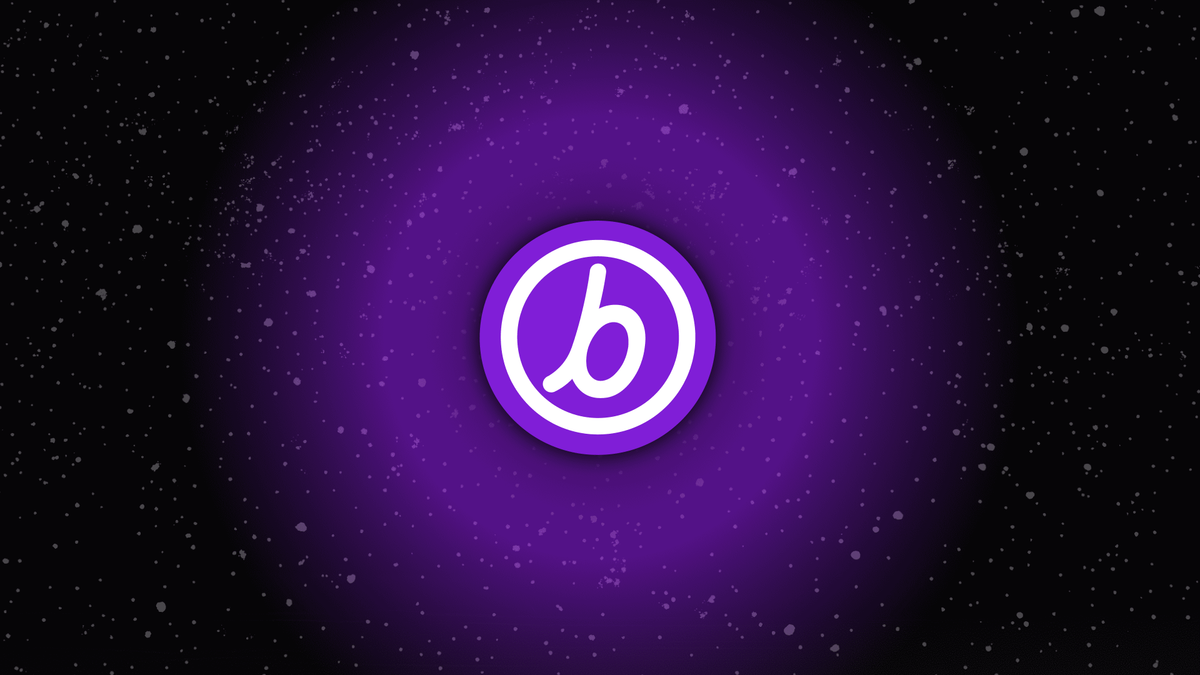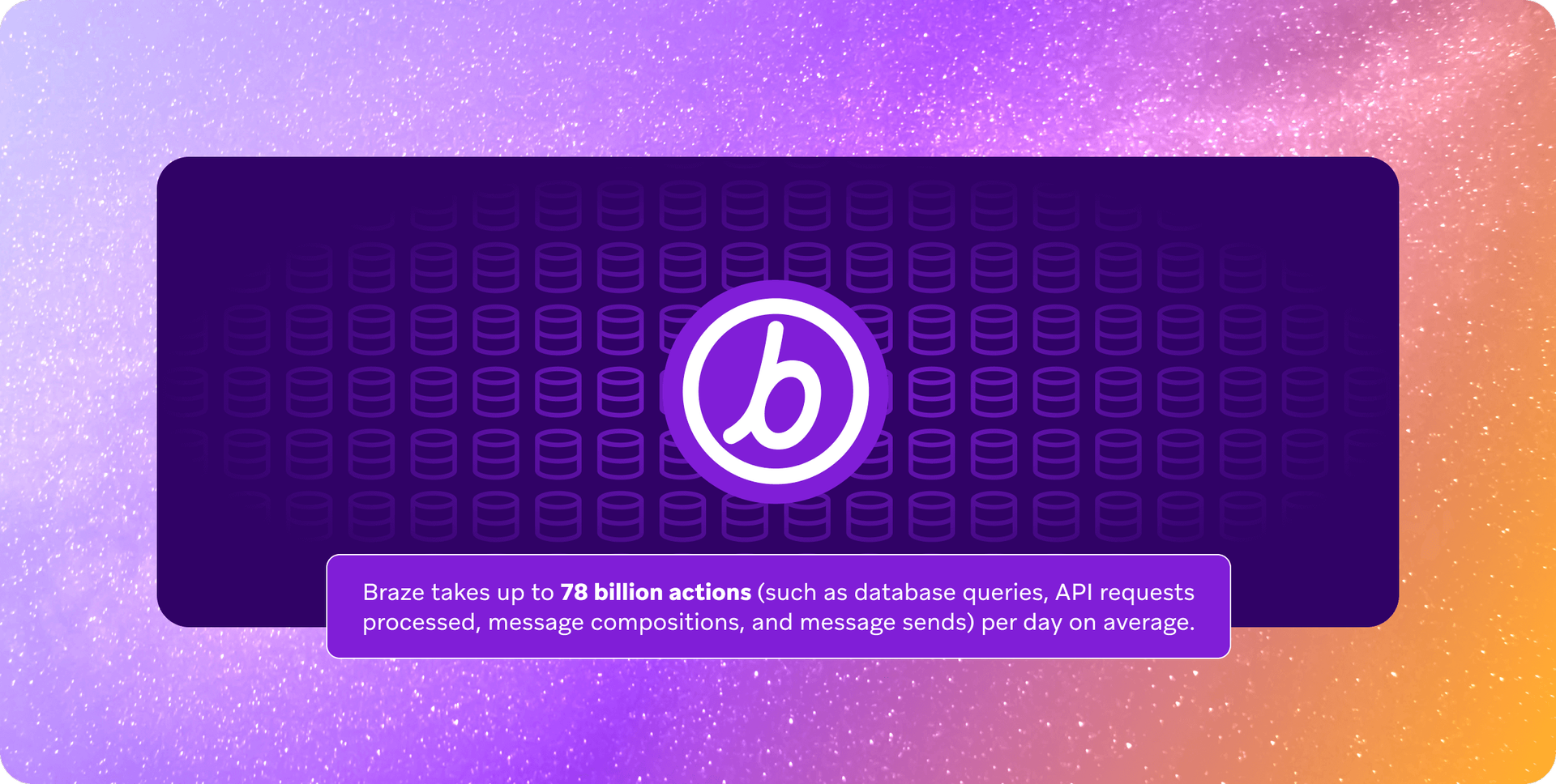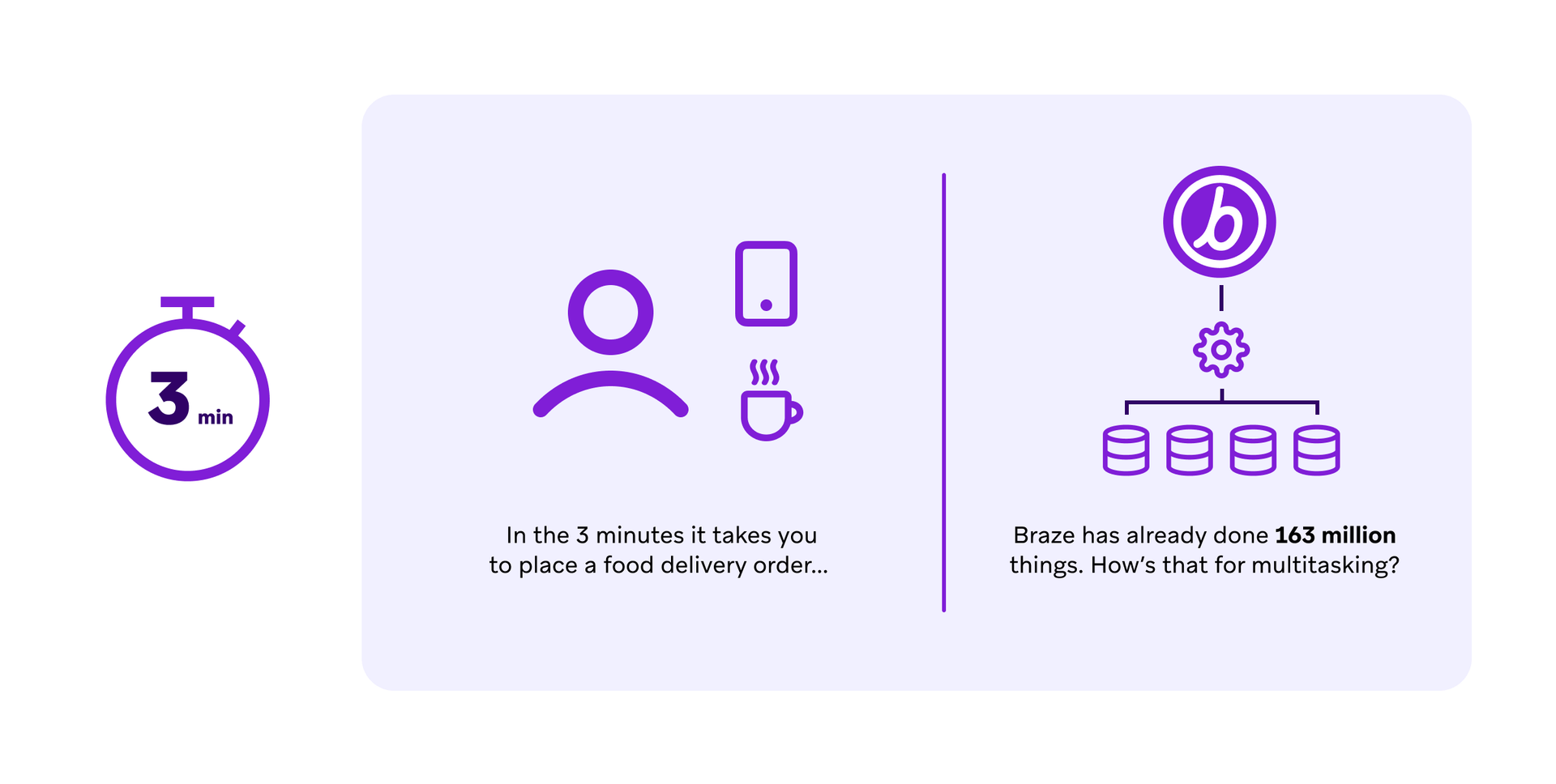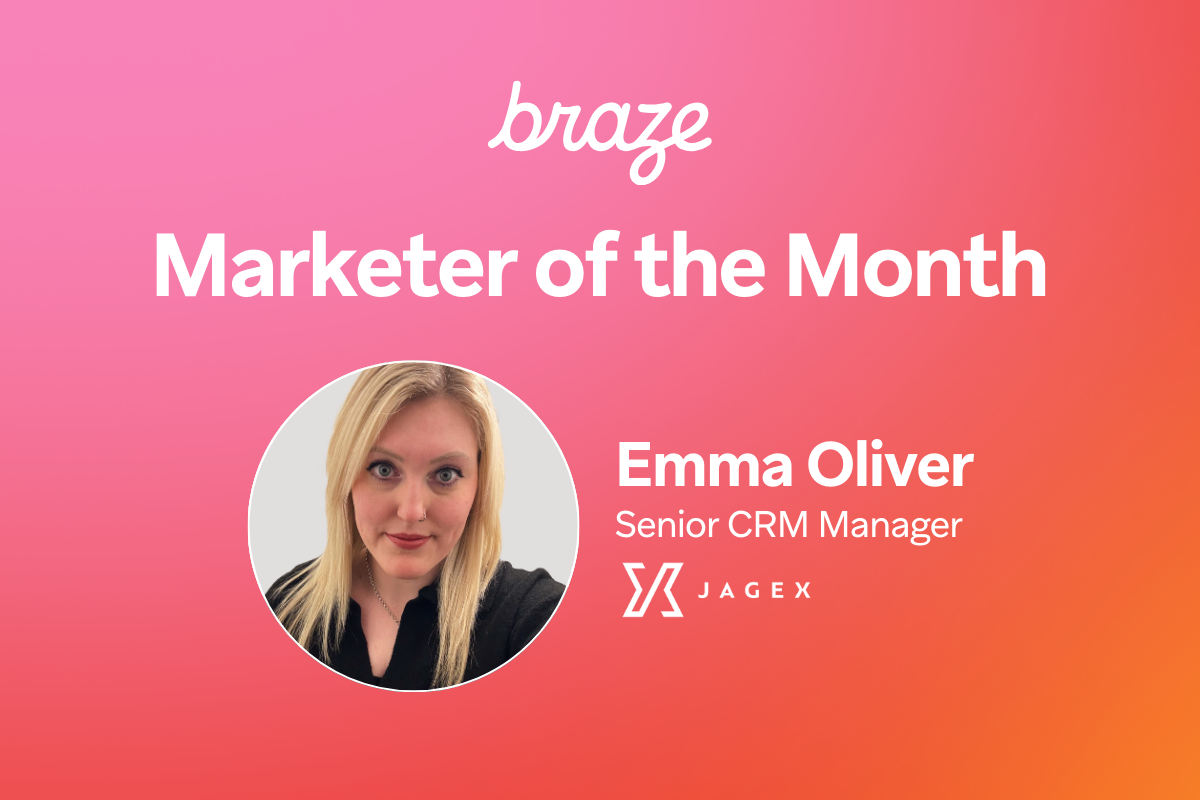The Million vs. Trillion Problem: Conceptualizing the Size and Scale of the Braze Platform
Published on January 15, 2025/Last edited on January 15, 2025/6 min read


Andy Trevino
VP, Solutions ConsultingThe number of stars in the sky. A billionaire’s daily earnings. The unimaginable number of cells in the body. These are all dizzying figures that get fuzzier the more you try to imagine their scale. How much bigger is a trillion than a million anyway? Answer: A lot bigger (a million times bigger).
Braze is more than familiar with these kinds of numbers. In a typical ten seconds—the time it took you to load and start reading this article—our systems will have processed over 45,000 requests for just one of our numerous API endpoints. Operating at this kind of phenomenal scale, where you’re managing millions of data points per minute, should be table stakes for customer engagement platforms. Without it, companies can’t deliver messages on time, leading to sends that are delayed or stay undelivered during peak times, missing customers in key moments. Data processing can slow to a crawl. As real-time data becomes harder for brands to act on, customer confidence can erode along with it.
Even the most sophisticated marketing campaign is worthless if it never makes it into an inbox or onto a user’s device. It all boils down to the system that powers it—and that’s where Braze can put your mind at ease.
How Braze Was Designed to Support Customer Engagement at a Massive Scale
So what’s under the hood to drive all this speed at scale? At its simplest: An automated and efficient data infrastructure. Braze prioritizes autoscaling (that is, the ability to automatically scale capacity up or down based on current or anticipated needs) to deliver power where it’s needed and to respond to customer growth throughout their tenure. First, let’s cover the two types of processing at Braze—data management and sending messages. You can think of these as data coming in and data going out. Let’s start with inbound data.
Our customers install our SDKs in their mobile apps and websites as part of their integration with Braze. That way, our servers can ingest data to help those marketers learn more about user preferences and behaviors, which in turn can power customer-centric messaging. In addition, because the Braze Data Platform is built to support interoperability between different systems, brands can take advantage of our powerful, extensible APIs and out-of-the-box integrations with leading data and marketing technology solutions to ingest and manage data from partners like Amplitude, AppsFlyer, mParticle, and Segment, among many others.
Once this data is ingested, handling it efficiently requires speed. Each piece of data needs to be processed as quickly as possible to facilitate updated user profiles, accurate analysis, and timely communications on behalf of our clients.
That brings us to the outbound data: Message sending. Customer messaging—sent as part of what we call Campaigns or Canvases—may be as robust as an entire ecosystem or as lightweight as a single SMS. No matter how our customers might use Braze to send messages, it’s essential that they have the ability to seize the moment with sends triggered by user behaviors, API calls, and key points in the lifecycle.
This is where the orchestration magic happens. To index for speed, we assign server capacity to each customer based on their current size and projected growth, knowing we can scale as they grow and provision differently-sized databases per customer. Our largest clients—the brands that send the highest volume of Campaigns and/or Canvases and that have the most complex data needs—have their own dedicated databases. Medium-sized clients have their own databases on shared servers. Our smallest clients share space within a single database, separated logically with strict security and data visibility controls.
From there, thousands of worker servers triage data processing based on their assigned “job.” The queue system balances remarkable power and precision, but the takeaway is this: The job queue pattern supports concurrency, reliability, and scalability, regardless of size. Every customer gets priority in this model, and because servers can belong to an individual client, there’s protection from “noisy neighbors,” other clients and within your own sends. Scaling capacity is supported by AWS Auto Scaling, our own proprietary auto-scale processes, and manual scaling, which together ensure we can power our customers’ largest burst sends while keeping their triggered messaging lightning-fast.
How to Understand the Size and Scale of the Braze Platform
Okay. So we’re talking best-in-class infrastructure and speed. But when it comes to scale, how big is Braze big? Here’s a breakdown: Braze processes more than 45,000 requests every 10 seconds for a given API endpoint. And in any given minute, the system handles an average of 14.3 million API calls across our solution.

So we’re talking about millions upon millions of requests every single minute, every single hour. And mind you, this is a normal day at Braze: Not a Herculean task, just a Friday afternoon.
Forget providing notice for your biggest campaigns. You shouldn’t have to worry about whether your tech stack can keep up for a new product launch or a major sales push. Braze is built to handle your record-breaking moments—better yet, it’s designed for every one of our clients to experience their best day, all at once. Thousands of messages deployed instantly? No sweat. Time-bound campaigns that trigger waves of inbound replies? Simple. The data tells the story: No single client should drive a meaningful shift in the Braze platform’s overall traffic. It’s just how we’re built.

Braze handles this level of volume with ease—no bottlenecks, no delays, just smooth, uninterrupted service. It’s what happens when your system is built for real-time speed at scale, not just blast sends to big email lists.
Learn more about the Braze platform’s unique combination of speed and scale, and see how we’ve powered past Campaign and Canvases for customers of all sizes and needs.
Forward Looking Statements
This blog post contains “forward-looking statements” within the meaning of the “safe harbor” provisions of the Private Securities Litigation Reform Act of 1995, including but not limited to, statements regarding the performance of and expected benefits from Braze and its products. These forward-looking statements are based on the current assumptions, expectations and beliefs of Braze, and are subject to substantial risks, uncertainties and changes in circumstances that may cause actual results, performance or achievements to be materially different from any future results, performance or achievements expressed or implied by the forward-looking statements. Further information on potential factors that could affect Braze results are included in the Braze Quarterly Report on Form 10-Q for the fiscal quarter ended October 31, 2024, filed with the U.S. Securities and Exchange Commission on December 10, 2024, and the other public filings of Braze with the U.S. Securities and Exchange Commission. The forward-looking statements included in this blog post represent the views of Braze only as of the date of this blog post, and Braze assumes no obligation, and does not intend to update these forward-looking statements, except as required by law.
Related Tags
Releated Content
View the Blog
The new inbox reality: How iOS changes are reshaping email marketing

Aparna Prasad

Experience optimization: Turning data insights into better journeys

Team Braze

December 2025 Bonfire Marketer of the Month: Jagex’s Emma Oliver
